If we want our cities to thrive, we need to provide housing solutions for everyone. The most successful social housing being designed and built today not only features a combination of socially creative programming, innovative sustainability strategies, but a keen sensitivity towards culture and tradition.
The concept of affordable housing arose to accommodate the disadvantaged otherwise living in generally unsafe and unhygienic environments into decent, economical housing setups. Although the concept behind public housing is indeed very inspiring, not all projects end up being successful. In fact, the first few attempts made resulted in complete failure. High crime rates, drug abuse, and violation were common features, especially in areas isolated from the surrounding communities. This, alongside financial complications, indeed make affordable housing a key issue in many developing countries around the world; one that is not only of primal importance given the current pandemic situation but is key for the development of healthy communities.
Here are some resourceful examples that have created sustainable, inclusive and interactive neighbourhoods that are inspiring future projects as well.
Quinta Monroy Housing, Chile
The housing project was initiated to accommodate 100 families in an area of 5000 square meter area, which these same families had illegally inhabited for the past 30 years. The government involved ELEMENTAL to resolve the challenge.
These challenges included resolving the issue of land price, which was too high given the city’s strategic location. The developers wanted to maintain the site conditions to keep the community connected to the opportunities provided in the city. They also knew that the location was very well suited to increase the value of property over time, an important aim of the project that was carried out. The government provided a subsidy of 7500 dollars per family, which was hardly enough to pay for the land, infrastructure and the architecture, and would also limit the built area to just 30 square meters. Keeping in mind how individual housing resulted in inefficient use of land, whereas vertical housing stopped expansion, the developers wanted every house to double its initial built area and utilize the land optimally.
For this, the developers designed middle-class family houses as though the budget is 750,000 dollars instead of 7500 dollars. This helped increase the area to 72 square meters, but the money available to each family was just for half the house. thus, the main half could only be built, using the funding available by the government, which included the basic needs like the kitchen, bathroom, partition walls, and stairs. Keeping the provision for expansion, each building was just 2 floors high, with each solid structure alternating with a void of the same size, where it could be expanded as per the needs and financials of the family, and could be customized in terms of textures and colors according to the wishes of the residents.
The aspect of community participation in the building process created a sense of ownership and belongingness for the residents, increasing the livability of the area. Furthermore, adding to the success of the project, each unit reached more than double its price within a year, which of course, is a great measure of how affordable housing approaches could be carried out.
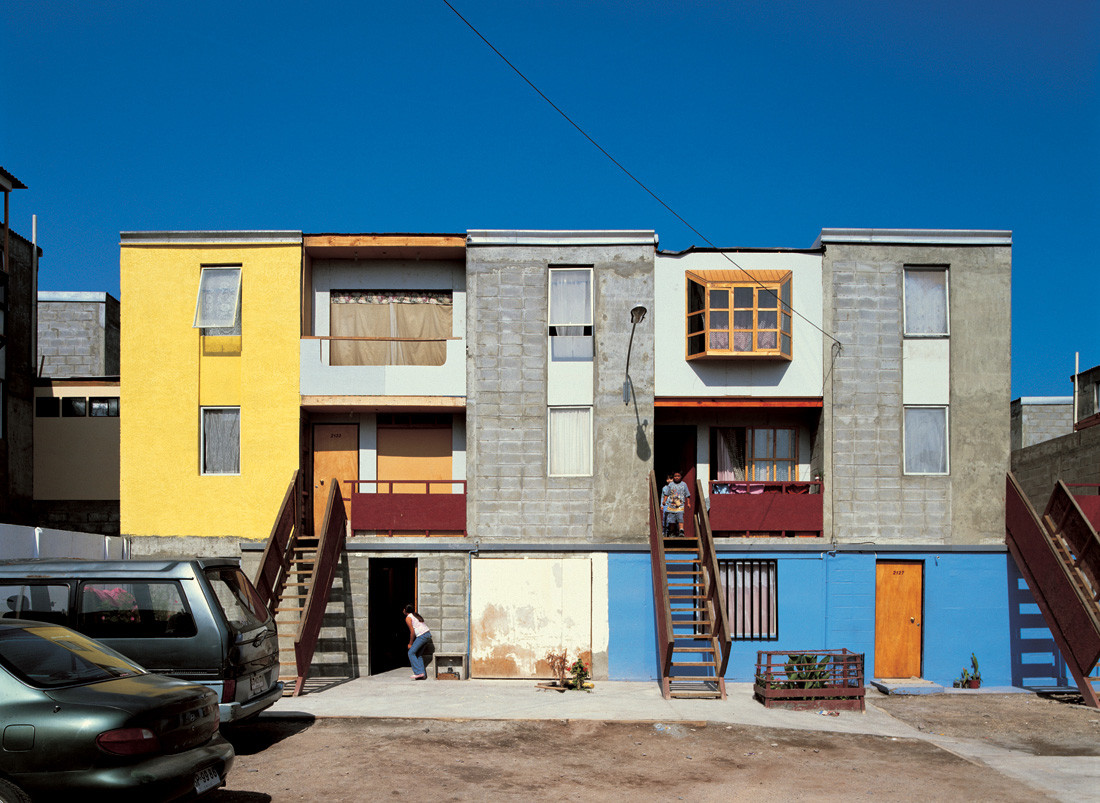


Savonnerie Heymans Public Housing, Brussels
This project, designed and renovated by MDW Architecture, aims to serve as a public housing projects scheme. The Savonnerie Heymans is an adaptive reuse of a soaps factory, which now provides 42 low-energy social housing units. These units contain a variety of spatial programs such as studios, 1-6-bedroom apartments, lofts, duplexes, and maisonettes.
There were also different types of buildings within the complex. Some designed from scratch, while others were renovated, and some restored to their original state. These varieties aimed to reflect the diversity of people who lived in the heart of Brussels.
The scheme also offers various communal facilities. These include a game library, mini-forest garden, playgrounds, 3D-landscaped park, and the main promenade. Such vibrant social spaces collectively brought people together to organize events and partake in communal activities.
The complex is enclosed by a low-maintenance glass enclosed gallery, which provides thermal and acoustic insulation to the building. Therefore, allowing the complex to require less than 15 kW per year to heat one square meter area. Its roof also has 60 square meters of solar panels, and a comprehensive rainwater collection system, whose harvested water is used for toilets. Moreover, the chimney of the soap factory is used as an important feature for the ventilation system of the basement.
This high-density affordable housing complex achieves social interaction, affordability, and creates a vibrant community and sustainability and green living in a dense urban area.

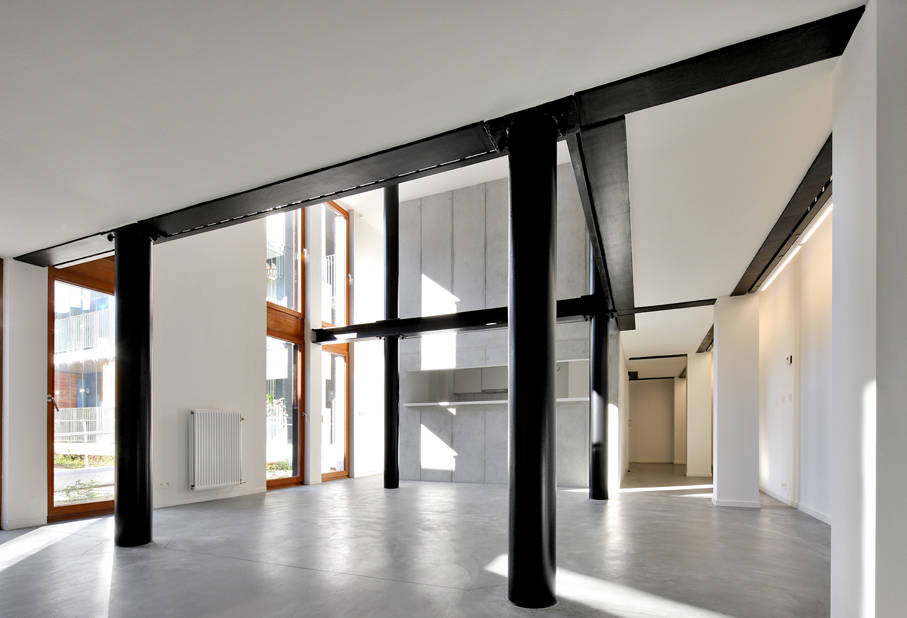

Quayside Village, Canada
This housing project provides 19 residential units, five of which are affordable housing to achieve social equity. The units consist of 1–3-bedroom apartments and townhouses. The most interesting aspect is the fact that the whole area is designed to be wheelchair accessible, has a proper gray water reuse system, and an intensive recycling structure.
The complex spans on a compact area of 1000 square meters, which greatly helps in reducing overall energy consumption and the usage of resources. The whole complex is very accessible from public markets and on a sea-bus distance from restaurants, parks, schools, and other services. This helps in connecting the residents with city life as well.
It comprises of several communal programs, such as a 232-square meter common house and a 60-square meter commercial area, alongside a communal kitchen, laundry, crafts area, and a dining room with a setup for theatre. The facility is made from reused material that existed on the site. This includes stained glass windows, wooden doors, and oak floors, allowing this project to be communally inclusive and viably sustainable.
The allocation of areas is done very specifically for each family. For example, families with children are allotted townhouses with courtyards and play areas. Apartments on the upper floors, furthermore, provide beautiful views of the skyline of downtown Vancouver and mountain-scape. Each unit is specifically designed for scenic views, especially towards the courtyard filled with flowerbeds and communal gardens, where the residents grow their own food.


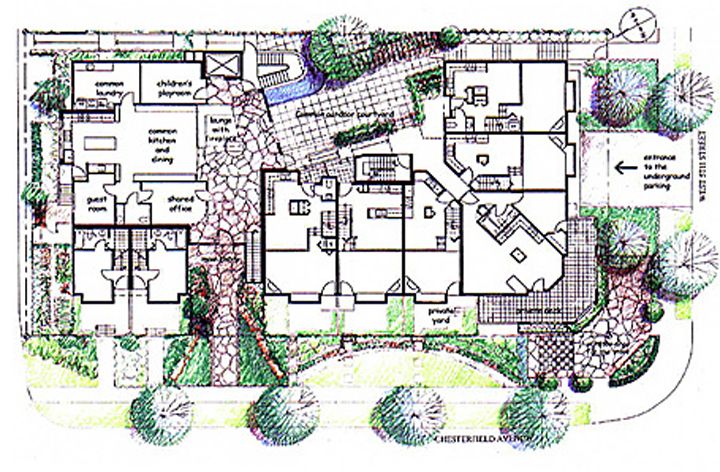
Tetris Apartments, OFIS architects, Ljubljana, Slovenia, 2007
The name of this social housing complex is a nod to the classic 1980s computer game, Tetris, designed by a local firm in Slovenia OFIS architects.
This four-story building is located at the edge of a highly commercialized apartment community developed a few years prior to this. In accordance with the building’s strategic and well-connected location with a major highway, the architects titled the balconies and apartment opening 30 degrees towards the quieter and south orientated side. Two more blocks are also planned on both longitudinal sides for the future with no direct windows towards east and west. Each apartment has views towards its own balcony, with glazed loggia. This not only helps in creating aesthetically pleasing views for the residents, but also eliminates the problem of privacy with surrounding buildings.
They are made of economic materials such as wooden oak floors, granite tiled bathrooms, and large windows with external metal blinds. The most interesting and participatory approach of the building comes with its open planning strategy. The architects designed the shell of each apartment as structural so the occupants may have the freedom to rearrange the interior walls according to their requirements.
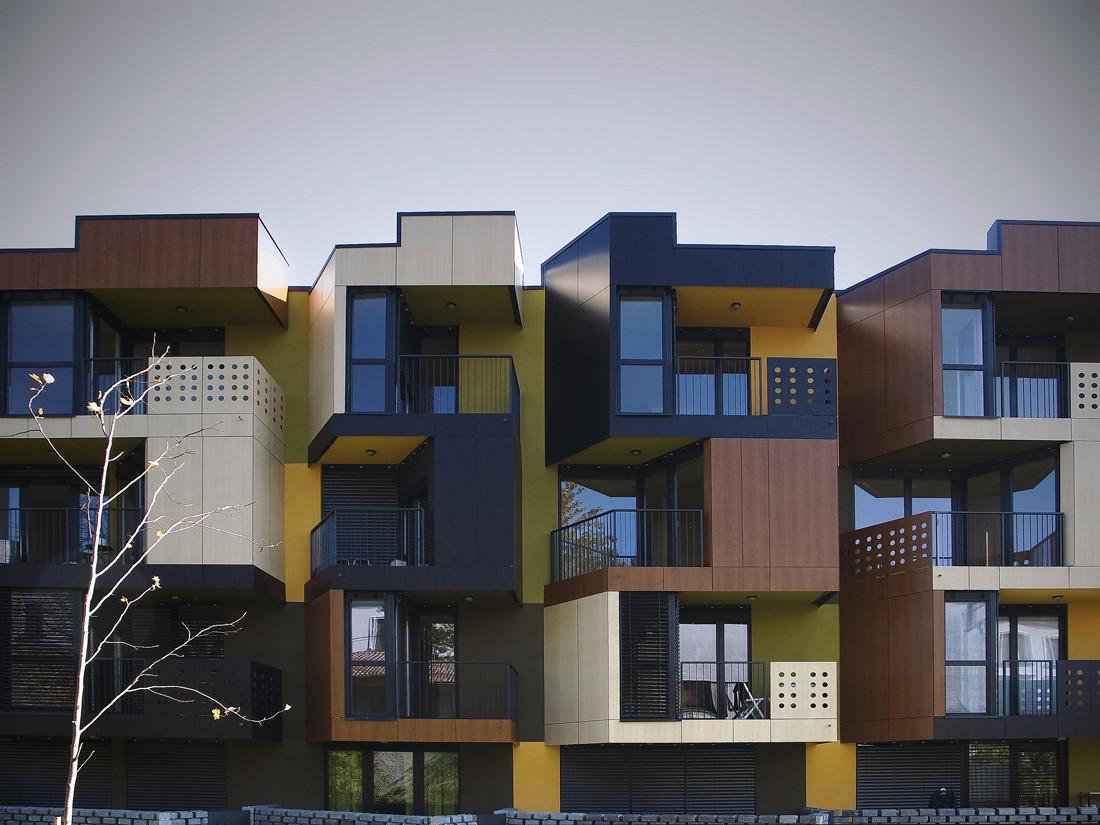

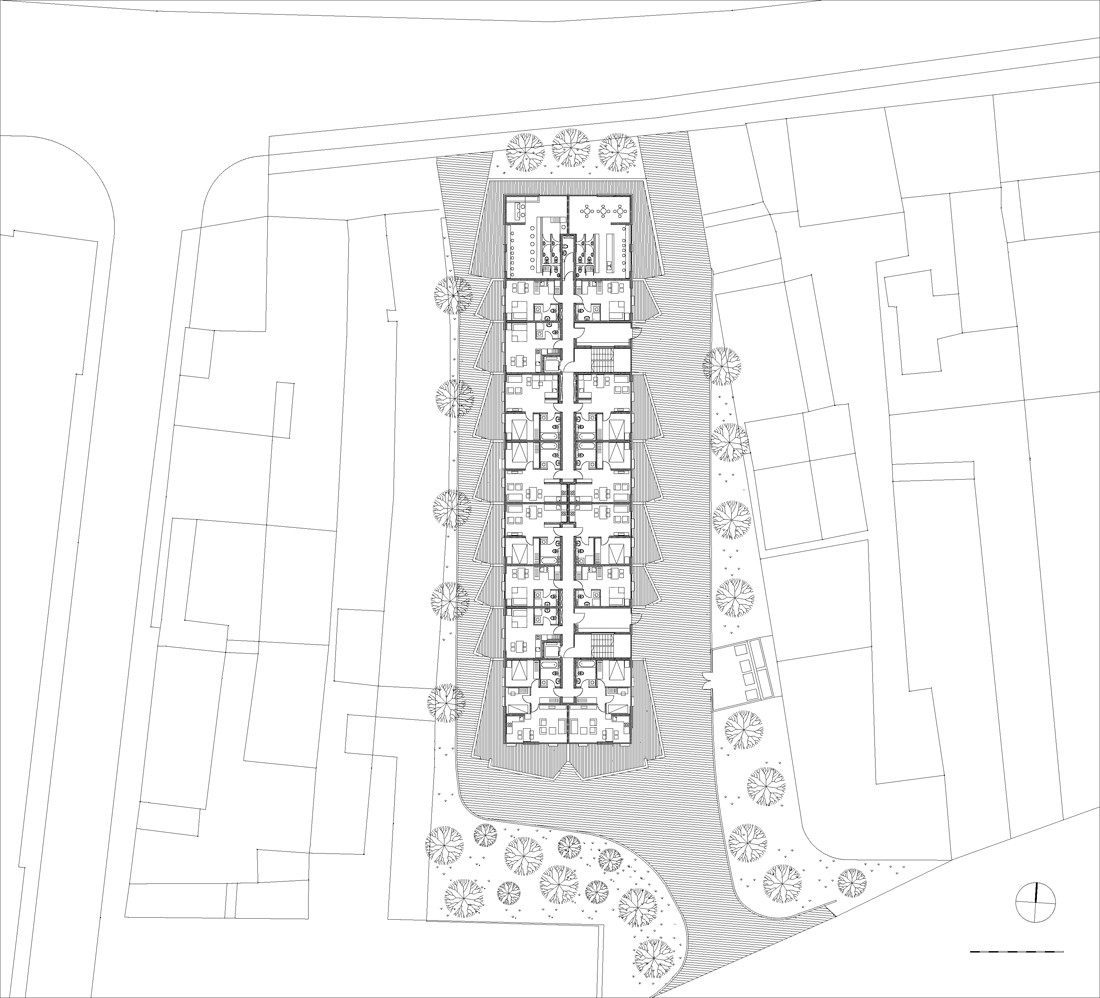
Ruca Dwellings, Undurraga Devés Arquitectos, Huechuraba, Chile, 2011
25 dwellings for members of a native Mapuche community in Huechuraba, Chile were designed by Santiago architects, Underraga Devés Arquitectos, as part of a larger development of conventional social housing.
The facility’s design was in accordance with traditional Mapuche housing typology, temporary structures of tree trunks and branches. The architects made use of effective communication with members of the community and sponsoring organizations and developed brick and reinforced concrete frame structure with pinewood embed on two sides for bracing. They also used coligüe cane for the design of the façade.
Sensitivity to the harsh climate was also kept in mind. Thus, the houses were sited to face the east, as per the Mapuche tradition and featured large kitchens, which symbolized the importance of the fire in Mapuche culture.
The result was a system of intricately culturally, socially, and architecturally sensitive and intrusive affordable housing that was opened welcomed and accepted by the community members.
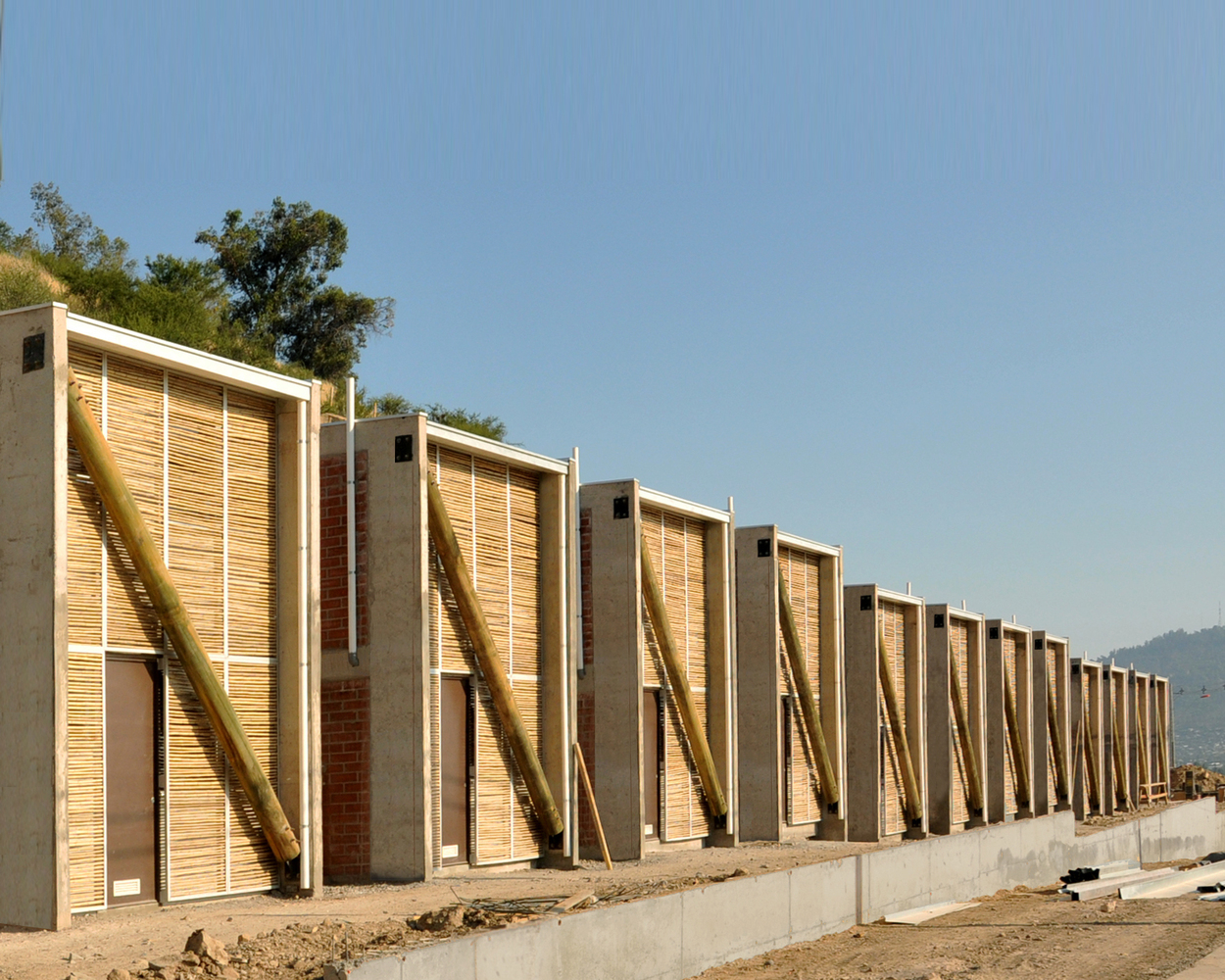


Source: re-thinkingthefuture



